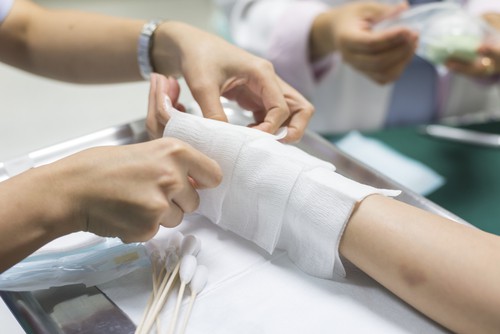

Apply any ointments or creams to the burned area.

Seek emergency help or call 9-1-1 if you have a third-degree or a second-degree burn that covers more than two to three inches in width or is on your face, hands, feet, a major joint, groin, genitals, or buttocks. Major burns must be treated as medical emergencies. If you have burned in your airway, you may experience: Facial burns can happen as part of a larger burn, but your face can get burned if you are too close to the flame when you light a barbecue or pilot light, or even if you suddenly release steam from a pot, for example. Burns on your faceīurns on your face, regardless of the severity, may also cause internal burns in your airway, which can be life-threatening. People with third degree burns are at particular risk for dehydration, infection, and sepsis. There may be no pain in the area because the nerves may be destroyed, although there will likely be pain around the site, where the burns are not as deep.
#3rd degree burn treatment skin#
These burns go through the layers of the skin to the fat below. These are serious injuries, even if they are small. Sunburns that blister and are very painful are considered to be second degree burns. They may cause blistering and breaks in the skin, increasing your risk of developing an infection. Second degree burns are usually painful and cause redness and swelling. Second degree burns are also considered major if they are on the face, hands, feet, a major joint, groin/genitals, or buttocks.

If the burn is small, less than two to three inches wide, it is considered minor, but more extensive second degree burns are treated as major burns. These injuries are deeper than first degree burns, affecting the epidermis and the second layer of the skin, called the dermis. Mild sunburns are a common type of first degree burn. They can be painful, causing redness to the skin and some swelling. They are minor injuries that affect just the outer layer of skin, called the epidermis. These are the types of burns that most people experience at some time. Types of burnsīurns are categorized according to their severity: Many who survive are left with life-changing effects, such as post-traumatic stress disorder (PTSD), chronic pain and fatigue, organ dysfunction (organs don’t work properly), and/or amputations. Worldwide, one-third of people who develop sepsis die. Sepsis and septic shock can result from an infection anywhere in the body, such as pneumonia, influenza, or urinary tract infections. Sepsis kills and disables millions and requires early suspicion and treatment for survival. Sepsis, which was often called blood poisoning, is the body’s life-threatening response to infection. They range from minor to severe, and while serious injuries can be life-threatening, any burn that causes a break in the skin can result in an infection, which can lead to sepsis. Burns can also be caused by chemicals, heated objects, or even electricity. The degrees of burns refer to the depth of the affected tissue and range from first degree to third degree, with third degree burns being the deepest.A burn is damage to your skin, most often caused by fire/flame or steam and hot liquids. As part of the initial exam, the doctor will determine the severity and the percentage of burns.


 0 kommentar(er)
0 kommentar(er)
